Diamond Cut |
|||||||
 |
 |
||||||
Knitted tunic in DROPS Fabel. The piece is worked back and forth with garter stitch, domino squares and stripes. Sizes S - XXXL.
DROPS 194-27 |
|||||||
|
EXPLANATIONS FOR THE PIECE: ------------------------------------------------------- RIDGE/GARTER STITCH (worked in the round): 1 ridge = 2 rounds. Knit 1 round and purl 1 round. RIDGE/GARTER STITCH (worked back and forth): 1 ridge = Knit 2 rows. STRIPES-1: * 1 ridge wooden rose, 1 ridge salt and pepper *, work from *-*. STRIPES-2: * 1 ridge rose mist, 1 ridge grey *, work from *-*. STRIPES SLEEVES: Work 15-15-16-16-17-17 cm with * 1 ridge rose mist, 1 ridge salt and pepper *, work from *-*. Work 5 cm with * 1 ridge rose mist, 1 ridge grey *, work from *-*. Work 3 cm with * 1 ridge salt and pepper, 1 ridge grey *, work from *-*. Work 15 cm with * 1 ridge wooden rose, 1 ridge rose mist *, work from *-*. Work 1 cm with * 1 ridge grey, 1 ridge salt and pepper *, work from *-*. Work 8 cm with * 1 ridge rose mist, 1 ridge grey *, work from *-*. Work 4 cm with * 1 ridge wooden rose, 1 ridge rose mist *, work from *-*. Continue to finished length with * 1 ridge grey, 1 ridge wooden rose *, work from *-*. ------------------------------------------------------- START THE PIECE HERE: ------------------------------------------------------- TUNIC - SHORT OVERVIEW OF THE PIECE: The piece is worked back and forth with circular needle. You first work whole and half domino squares. Then work the shoulder and pick up stitches down the edge of the section with domino squares before working garter stitch and stripes out to the side for body and sleeves. FRONT PIECE: WHOLE DOMINO SQUARE (1): Cast on 129-129-137-137-145-145 stitches with circular needle size 3.5 mm and wooden rose. Insert a marker in the middle stitch of the row (= 64-64-68-68-72-72 stitches on each side of the stitch with marker). Work GARTER STITCH and STRIPES-1 – read description above and work domino square as follows: ROW 1 (= wrong side): Knit. ROW 2 (= right side): Knit until there is 1 stitch left before the marker, slip 1 stitch as if to knit, knit 2 together and pass the slipped stitch over the knitted together stitches, knit to end of row. Repeat rows 1 and 2, i.e. decrease 2 stitches in middle of square every 2nd row until there is stitch left on the row. Cut the strand and pull it through the stitch. The domino square measures approx. 28-28-30-30-31-31 x 28-28-30-30-31-31 cm. HALF DOMINO SQUARE (2): Start from the right side with circular needle size 3.5 mm and rose mist and knit up 65-65-69-69-73-73 stitches (= 2 stitches in first ridge and 1 stitch in each of the next ridges) along the right side of the first domino square. Work STRIPES-2 – read description above and work a half domino square as follows: ROW 1 (= wrong side): Knit. ROW 2 (= right side): Knit 2 together, knit to end of row. Repeat rows 1 and 2, i.e. decrease 1 stitch every 2nd row until there is 1 stitch left on the row. Cut the strand and pull it through the stitch. HALF DOMINO SQUARE (3): Start from the right side with circular needle size 3.5 mm and rose mist and knit up 65-65-69-69-73-73- stitches (= 1 stitch in each ridge until there is 1 ridge left and 2 stitches in last ridge) along the left side of the first domino square. Work STRIPES-2 and work a half domino square as follows: ROW 1 (= wrong side): Knit. ROW 2 (= right side): Knit until there are 2 stitches left on row, slip 1 stitch as if to knit, knit 1 and pass the slipped stitch over the knitted stitch. Repeat rows 1 and 2, i.e. decrease 1 stitch every 2nd row until there is 1 stitch left. Cut strand and pull it through the stitch. WHOLE DOMINO SQUARE WITH DECREASE FOR NECK (4): Start from right side with circular needle size 3.5 mm and wooden rose and knit up 64-64-68-68-72-72 stitches (= 1 stitch in each ridge) along the side of half domino square (2), knit up 1 stitch in the transition between the 3 domino squares and continue by knitting up 64-64-68-68-72-72 stitches (= 1 stitch in each ridge) along the side of half domino square (3) = 129-129-137-137-145-145 stitches. Insert a marker in the middle stitch of the row (= 64-64-68-68-72-72 stitches on each side of the stitch with marker). Work STRIPES-1 and work domino square as follows: ROW 1 (= wrong side): Knit. ROW 2 (= right side): Knit until there is 1 stitch left before the marker, slip 1 stitch as if to knit, knit 2 together and pass the slipped stitch over the knitted together stitches, knit to end of row. Repeat rows 1 and 2, i.e. decrease 2 stitches in middle of square every 2nd row until there are 47-47-51-51-51-51 stitches left on the row (i.e. after you have worked 41-41-43-43-47-47 ridges). Now work as follows: ROW 83-83-87-87-95-95 (= wrong side): Knit. ROW 84-84-88-88-96-96 (= right side): Knit 2 together, knit until there is 1 stitch left before the marker, slip 1 stitch as if to knit, knit 2 together and pass the slipped stitch over the knitted together stitches, knit until there are 2 stitches left on row, slip 1 stitch as if to knit, knit 1 and pass the slipped stitch over the knitted stitch. Repeat these last 2 rows, i.e. you decrease 2 stitches middle of square and 1 stitch in each side (= 4 stitches decreased) every 2nd row until there are 3 stitches left on row. Knit 1 row over all stitches, then work the last row as follows: Slip 1 stitch as if to knit, knit 2 together and pass the slipped stitch over the knitted together stitches = 1 stitch left. Cut strand and pull it through stitch. BACK PIECE: Cast on and work in same way as front piece. LEFT SHOULDER, SIDE OF BODY AND SLEEVE: Now work left shoulder, side of body and sleeve back and forth in garter stitch and work STRIPES SLEEVES - read description above: Cast on 27-27-31-31-33-33 stitches with circular needle size 3.5 mm and rose mist. Work garter stitch back and forth, AT THE SAME TIME at the end of each row cast on 1 new stitch. Work like this until you have worked 29-29-31-31-31-31 ridges and increased 29-29-31-31-31-31 stitches in each side of the piece = 85-85-93-93-95-95 stitches on needle. After the last row from the wrong side cut the strand. Leave the stitches on a circular needle or thread and work with circular needle size 3.5 mm as follows: Knit up from right side 92-92-97-97-101-101 stitches along the side of square (2) (see sketch) and use the next colour in the stripe. Continue from the right side over the 85-85-93-93-95-95 stitches on needle/thread, knit up 92-92-97-97-101-101 stitches along side of domino square on the other side = 269-269-287-287-297-297 stitches on row. Continue back and forth with garter stitch and stripes until piece measures 6-8-9-12-14-17 cm from where you knitted up stitches along the half domino squares. At the beginning of the next 2 rows cast off 46-46-48-48-51-51 stitches (= sides of tunic) = 177-177-191-191-195-195 stitches on needle. Insert a marker in each side of the piece (they mark the splits in sides and are used later in assembly). Continue with garter stitch and stripes and on the next row begin to cast off in each side for sleeve: Cast off stitches at beginning of every 4th row (every 2nd ridge) in each side as follows: Cast off 5 stitches 4-4-5-5-5-5 times, 2 stitches 7-7-8-8-9-9 times and 1 stitch 14-13-12-11-10-9 times = 81-83-85-87-89-91 stitches. Continue until the sleeve measures 53-54-55-56-56-57 cm from the cast-on edge. Cast off. Make sure that the cast-off edge is not tight. RIGHT SHOULDER, SIDE OF BODY AND SLEEVE: Work in the same way as left shoulder, side of body (i.e., knit up stitches along the side of square (3)) and sleeve. ASSEMBLY: Sew seam in raglan line – see black star in illustration. Sew with rose mist and sew in the outermost stitch-loop so that the seam is flat. Make sure that the seam is not tight. Sew sleeve seam from the cast-off edge at bottom of sleeve and upwards to the marker which was inserted before casting off 46-46-48-48-51-51 stitches for side in tunic. Repeat in other side. NECK: Start in the one raglan seam from the right side and knit up 118-140 stitches with short circular needle size 3.5 mm and wooden rose. Work 3 RIDGES in the round - read description above. Cast off with knit. Cut and fasten strand. |
|||||||
Diagram explanations |
|||||||
|
|||||||
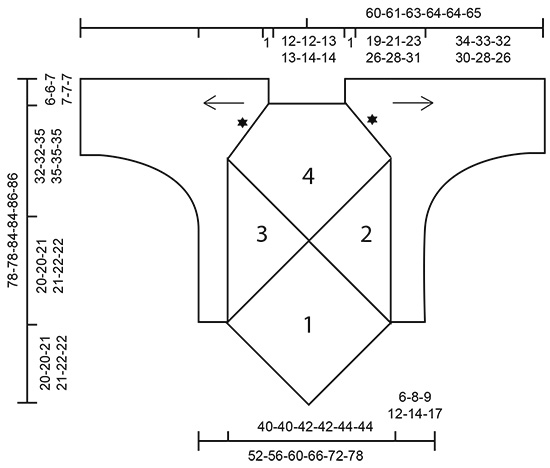
|
|||||||
|
Have you made this or any other of our designs? Tag your pictures in social media with #dropsdesign so we can see them! Do you need help with this pattern?You'll find tutorial videos, a Comments/Questions area and more by visiting the pattern on garnstudio.com. © 1982-2024 DROPS Design A/S. We reserve all rights. This document, including all its sub-sections, has copyrights. Read more about what you can do with our patterns at the bottom of each pattern on our site. |
|||||||







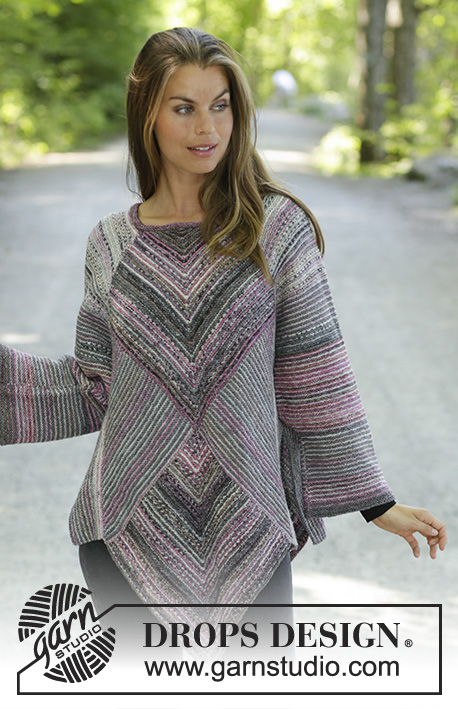
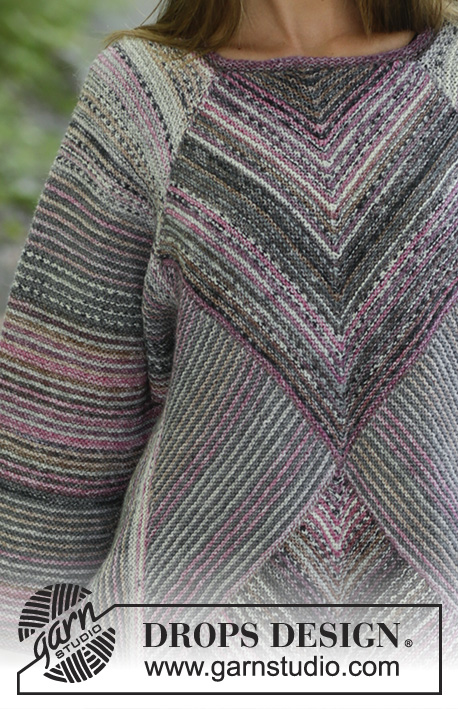












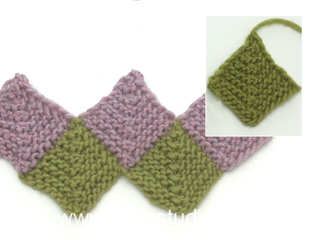
























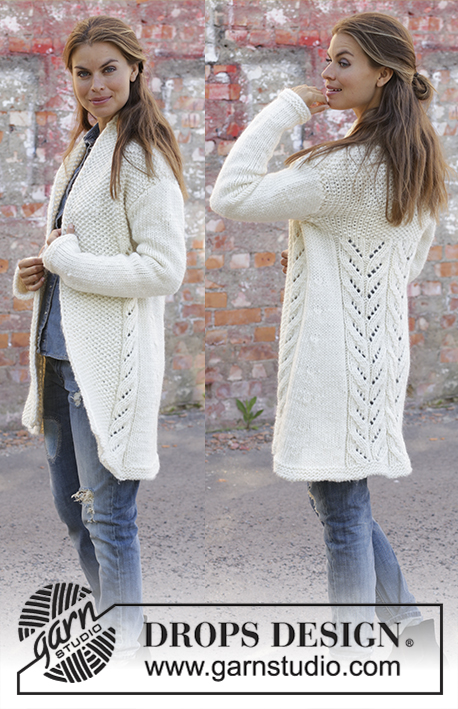


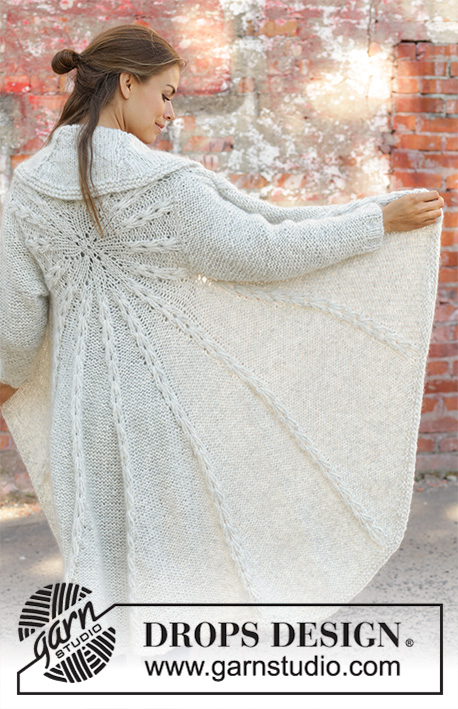






Comments / Questions (65)
Ik wil drops trui 194-27 breien in een andere kleurcombinatie waarbij ik bv. Fabel 677 wil gebruiken. Welke andere 3 kleuren zou u aanraden? Met vriendelijke groet, Esther
15.12.2022 - 09:52DROPS Design answered:
Dag Esthter,
Kleur is echt een kwestie van smaak, dus ik raad je aan om naar een verkooppunt in de buurt te gaan waar je de kleuren kunt bekijken. Je kunt ook een aantal kleuren bestellen via een webwinkel en de kleuren die je niet mooi vindt terug sturen.
15.12.2022 - 19:02Sorry, mijn vorige opmerking aub negeren....ik zat helemaal fout! Prachtig patroon en ik heb de trui bijna af.....wel veel wol over maar daar maakmik wel wat anders van
20.10.2022 - 15:35Bij de minderingen voor de mouw staat 5 x 5 iedere 2de ribbel afkanten...prima klopt helemaal...maar dan staat er dat je een x aantal keren 2 steken moet minderen en dan een x aantal keren 1 steek moet minderen....Op het origineel van het patroon staat 2 x 8 st. minderen en dan 1 x 9.......!!!!
15.10.2022 - 16:53Jeg holder på å strikke Diamond Cut, men er usikker på om jeg gjør riktig. Om jeg følger oppskriften og strikker 1.pinne i rillen fra vrangen og 2.pinne fra retten så blir på en måte vrangsiden på retten? Skal det være sånn? Det ser ikke sånn ut på bildene. Der er stripene mer tydelige og det ser ut som at det er strikket 1.pinne fra retten og 2.pinne fra vrangen i hver av fargene?
18.09.2022 - 22:26DROPS Design answered:
Hei Elfrid, Du strikker alle pinner rett (rillestrikk). Fargestripene er også 1 pinne med den ene fargen og 1 pinne med den andre fargen (bortsett fra på ermene hvor det er lengre striper). Håper dette hjelper og god fornøyelse!
21.09.2022 - 08:16Dank voor je antwoord van 28/4. Zo staat het ook in het patroon. Maar de vraag gaat over de boven punt van vierhoek 4. In de foto van het model is het namelijk geen punt maar is het afgeplat en lijken er veel meer dan 3 steken over te blijven om de nekrand te vormen. Hoeveel steken na de vermindering voor de halslijn blijven op de naald om afgehecht te worden? Het moeten zeker 20 of 30 zijn, toch?
28.04.2022 - 10:21DROPS Design answered:
Dag Liduina,
Juist door de minderingen aan beide kanten, maak je de halslijn, dus het is niet zo dat je ongeveer 20 steken over houdt om af te kanten. De ribbels staan immers schuin op die halslijn en door steeds te minderen ontstaat de halslijn.
04.05.2022 - 08:46In de foto van Diamond Cut is het Domino Vierkant 4 niet vierkant, maar in de beschrijving staat dat je door moet breien tot het wel vierkant is. Klopt dat? Heb je dan niet een te kleine halslijn?
24.04.2022 - 18:48DROPS Design answered:
Dag Liduina,
Als er 47-47-51-51-51-51 steken over zijn op de naald, brei je minderingen aan elke kant van het breiwerk; dit zijn de minderingen voor de hals.
28.04.2022 - 09:23Hej. Jeg forstår ikke at man skal strikke til der kun er 3 masker tilbage i felt 4, når halsen på modellen er lige.
06.04.2022 - 16:20DROPS Design answered:
Hej Kathe, halsen bliver automatisk lige når du følger forklaringen :)
08.04.2022 - 08:48Hjälp!!!! På mönster 194/27 undrar jag, räknas upplägget som ett varv och är det i så fall ett avigt eller rätt varv på hel dominoruta? Om det är avigt hur blir det då på den halva eftersom man skall sticka upp maskor från rätsidan? Räknas det som första varvet och i så fall måste väl det vara rätt? Det känns som om mina färger inte blir rätt, de tydligaste ränderna kommer på det som jag trodde var avigsida.
18.02.2022 - 12:04DROPS Design answered:
Hei Lena. Oppleggskanten regnes ikke som en pinne. Når du strikker Hel Dominorute er første pinne fra vrangen og det strikkes rett, andre pinne er fra retten og strikkes rett. Det er det samme når du strikker Halv Dominorute (1. pinne er vrangen og det strikkes rett og 2.pinne er fra retten og det strikkes rett). mvh DROPS Design
21.02.2022 - 10:31Ik heb het werk volgens de beschrijving opgezet en ben begonnen met strepen 1 (1 ribbel wooden rose en 1 ribbel salt en pepper). Volgens de beschrijving is de eerste naald de verkeerde kant en worden de minderingen aan de goede kant gedaan (dit is dus de tweede naald van de ribbel). Toch lijkt me de kant waar de strepen goed zichtbaar zijn, de goede kant te zijn. Hetgeen betekent dat ik de minderingen uitvoer aan de verkeerde kant. Wat heb ik hier niet goed begrepen? Kunt u mij dit uitleggen?
15.02.2022 - 16:04I really love the look of this pattern apart from the full domino square (1) and would love to find a way of making it into a half domino square so that the bottom of the tunic goes straight across the front and back in a line to meet the two half domino squares. Having already purchased the yarn I will try to find a way! Thank you for all your brilliant patterns and yarn. Our daughter disovered Garn Studio and I am very grateful to her and you. Best wishes - Jan
18.12.2021 - 11:30